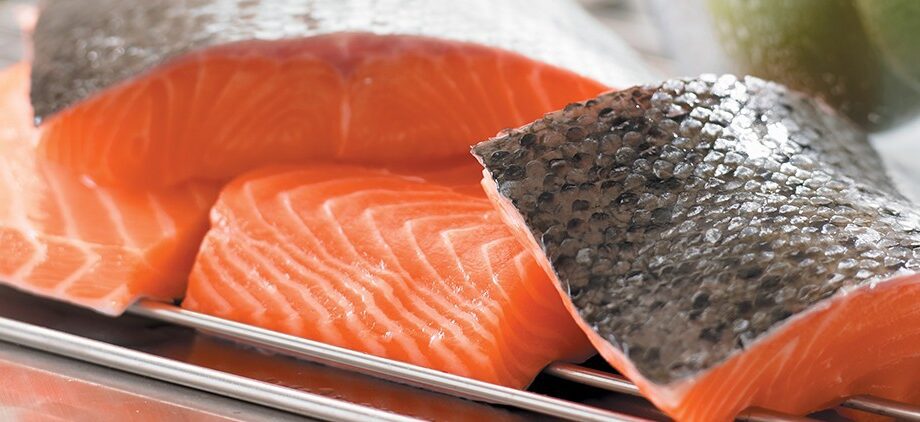How and where to store salmon correctly?
Always store salmon in the refrigerator. The shelf life is influenced by the temperature regime, which is selected depending on the form in which the fish was purchased. The frozen product, if it is not planned to be eaten in the near future, must be immediately placed in the freezer. If salmon is purchased chilled, smoked or salted, then some important rules must be followed during storage.
The nuances of storing salmon at home:
- chilled salmon will better retain its juiciness if, before placing it in the refrigerator, place the fish in a bowl filled with ice (ice can be made from special molds used to make cocktail cubes, and then, putting it in a bag, slightly chop it with a hammer);
- You can freeze chilled salmon in ice glaze (first, the fish is placed in a container of water so that the liquid completely covers it, and then put in the freezer, after the ice layer reaches several centimeters, the salmon in the ice crust is wrapped in a bag and left to be stored in the freezer);
- you can preserve the juiciness of chilled salmon using lemon or apple cider vinegar (you need to sprinkle the surface of the fish with lemon, and when using vinegar, they moisten the cloth in which the salmon is wrapped, and then put the fish in the refrigerator);
- if salmon is bought in containers or other types of packaging, then it is not recommended to open them before cooking or eating (the fish is packed using additional means, so it will last longer in the factory container);
- before freezing, salmon are placed in plastic bags or wrapped in cling film;
- it is recommended to store chilled salmon in the refrigerator, wrapped in food foil;
- chilled salmon cannot be stored in close contact with cooked food (fish deteriorates much faster from such a neighborhood);
- it is impossible to store chilled salmon in the refrigerator wrapped in a plastic bag or cling film (such a technique will only shorten its shelf life);
- it is also impossible to store chilled salmon open in the refrigerator (it is better to cover the fish with a cloth or wrap it in foil);
- it is necessary to defrost salmon without heat exposure and only at a temperature of -5 degrees (in a refrigerator or in ice water);
- you can preserve the juiciness of chilled salmon if, during storage in the refrigerator, you first place it in a container with cold water.
How much and at what temperature to store salmon
The shelf life of salmon depends on the temperature regime. You cannot store fish at room temperature. The maximum time during which salmon can maintain freshness while on the table is a period of no more than 2-3 hours.
When frozen, salmon can be stored in the freezer for several months. Fish should be frozen only when fresh. If the salmon did not have time to be eaten, and it began to deteriorate, after which it was frozen, then it is useless to store it. The taste of such fish will not return after defrosting, but will only completely deteriorate. In addition, eating spoiled fish products is hazardous to health. The storage temperature of salmon in the freezer should be stable and not deviate from the mark of approximately -20 degrees.
At temperatures from 0 to +2 degrees, salmon will remain fresh for a little longer than a week – from 7 to 10 days. In this mode, you can store chilled, salted or smoked fish. The type of salmon processing does not affect the shelf life too much. Thawed fish is an exception. Salmon should be removed from the freezer only if it will be eaten within XNUMX hours.
The shelf life and storage temperature of vacuum-packed salmon has its own nuances.:
- For 45 days, fish can be stored at temperatures ranging from -4 to -8 degrees;
- 30 days at temperatures from 0 to +6 degrees;
- 3 days at any temperature (in the refrigerator), if the vacuum packing is made by yourself.
These figures relate to the total shelf life from the date the fish was packaged, not from the date of purchase. If the fish was packed 10 days ago, then, depending on the temperature regime, it can be stored from 20 to 25 days at home.










